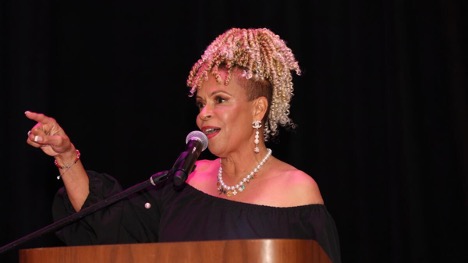Managing a budget and saving are important financial literacy skills. However, numerous national surveys have shown that basic financial literacy and knowledge in the United States is low.
Unfortunately, certain racial groups and ethnicities experience even greater gaps in financial literacy compared to whites, and often it is these groups that could benefit the most from stronger financial knowledge.
The Federal Government Accounting Office defines financial literacy as:
“The ability to make informed judgments and to take effective actions regarding the current and future use and management of money. It includes the ability to understand financial choices, plan for the future, spend wisely, and manage the challenges associated with life events such as a job loss, saving for retirement, or paying for a child’s education.”
High-quality financial education is critical to help people successfully navigate financial challenges, capitalize on opportunities to invest, build resilience and recover from economic setbacks.
Financial literacy and minority communities
A recent study by George Washington University confirmed that despite being major contributors to the American economy, African Americans “lag behind others – particularly whites – in their financial wellness.” Numerous economic indicators contribute to this disparity including median household income, net worth and student-loan debt, as highlighted in the study.
Additionally, it becomes more difficult for people of color to attain financial equity, as they are up against the generational wealth building that white families share and remain at a lower income and quality of life generation after generation. Systemic issues such as “redlining,” or the discriminatory practice of denying home purchases or loans based on race or ethnicity, has had a huge impact on families. These practices continue to contribute to intergenerational wealth and asset inequity not just for Black communities but Indigenous, Asian and Latino communities as well.
According to a 2018 Financial Industry Regulatory Authority (FINRA) national survey, financial literacy rates are not evenly dispersed across race and ethnicities. The FINRA study showed that Asian and white Americans were able to correctly answer 3.2 out of six questions that assess basic financial literacy, while Hispanic Americans were able to answer 2.6 and Black Americans 2.3
However, it’s important to note that not all Asian-American communities score high in financial literacy. When data about Asian American financial health is disaggregated, there are dramatic disparities that divide sharply by country of origin, wealth and education. For example, Japanese and Indian families skew higher and closer to whites when it comes to financial well-being and knowledge. However, Vietnamese, Cambodian, Laotian and Chinese families tend to score much lower on financial knowledge.
At one time, the only work many Asian Americans could find in the United States after fleeing repressive governments was to start small, family-owned businesses. These businesses often only allowed families to just get by financially and save little – a trend that continues today.
The FINRA study highlighted another important consideration – the economic well-being of the person. Survey data from the Federal Deposit Insurance Corporation (FDIC) showed that although the number of Americans who don’t use banking services – often known as being “unbanked” – has declined, Native American or Alaska Native, Black and Hispanic households and other less-educated and younger households are more prone to use bill payment services, money orders and check cashing.
The importance of financial literacy
A person’s financial education often comes from one of five sources: family, secondary education, college, military or an employer. But studies have shown that it’s the household income and education level that makes the biggest difference. One major factor that can impact both household income and education level: socioeconomic status.
Due to socioeconomic structural barriers, minority groups can have less access to wealth, experience higher rates of unemployment and receive less education. These circumstances can lead to trusting predatory financial services and continued denial of financial skills education.
Additionally, financial literacy affects financial well-being. Budgeting, bill paying and smart investing count as financial knowledge. As the use of personal credit for mortgage, student loans and credit cards increases, financial literacy is especially important because it builds a person’s ability to successfully navigate financial services.
Making a difference locally
Closing the gap on financial literacy is critical for creating equitable opportunities to achieve financial well-being, from saving for the future to homebuying.
The San Diego Foundation and other local organizations understand the importance of financial literacy. That’s why The San Diego Foundation, LISC San Diego and the Urban League of San Diego County joined together to launch the San Diego Black Homebuyer Program to improve the racial wealth gap in San Diego by investing in generational wealth-building opportunities through Black home ownership. As part of the program, prospective homeowners have access to financial literacy resources to help plan for a financially stable future.
Learn more about the San Diego Black Homebuyer Program.




